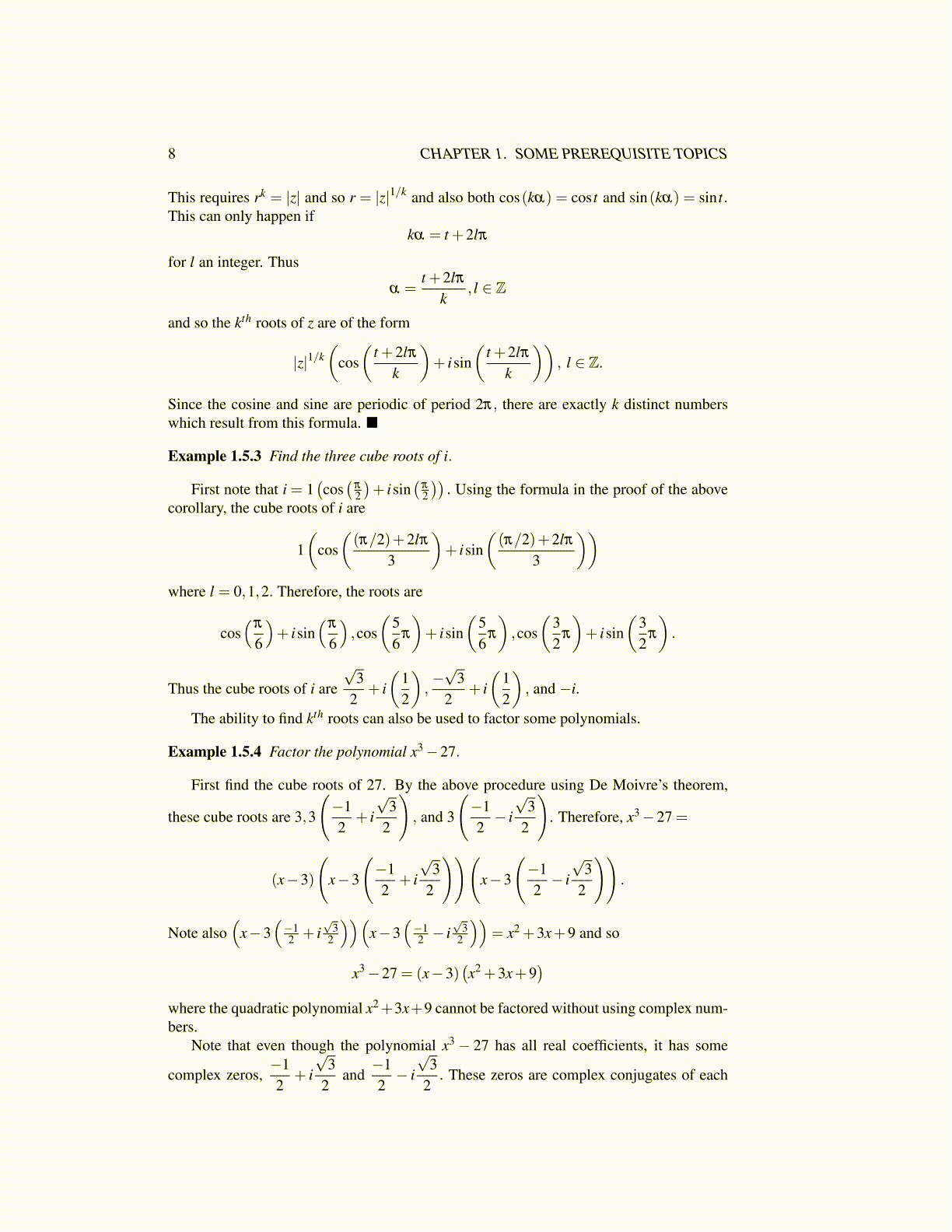
8 CHAPTER 1. SOME PREREQUISITE TOPICS
This requires rk = |z| and so r = |z|1/k and also both cos(kα) = cos t and sin(kα) = sin t.This can only happen if
kα = t +2lπ
for l an integer. Thus
α =t +2lπ
k, l ∈ Z
and so the kth roots of z are of the form
|z|1/k(
cos(
t +2lπk
)+ isin
(t +2lπ
k
)), l ∈ Z.
Since the cosine and sine are periodic of period 2π, there are exactly k distinct numberswhich result from this formula. ■
Example 1.5.3 Find the three cube roots of i.
First note that i = 1(cos(
π
2
)+ isin
(π
2
)). Using the formula in the proof of the above
corollary, the cube roots of i are
1(
cos((π/2)+2lπ
3
)+ isin
((π/2)+2lπ
3
))where l = 0,1,2. Therefore, the roots are
cos(
π
6
)+ isin
(π
6
),cos
(56
π
)+ isin
(56
π
),cos
(32
π
)+ isin
(32
π
).
Thus the cube roots of i are
√3
2+ i(
12
),−√
32
+ i(
12
), and −i.
The ability to find kth roots can also be used to factor some polynomials.
Example 1.5.4 Factor the polynomial x3−27.
First find the cube roots of 27. By the above procedure using De Moivre’s theorem,
these cube roots are 3,3
(−12
+ i
√3
2
), and 3
(−12− i
√3
2
). Therefore, x3−27 =
(x−3)
(x−3
(−12
+ i
√3
2
))(x−3
(−12− i
√3
2
)).
Note also(
x−3(−12 + i
√3
2
))(x−3
(−12 − i
√3
2
))= x2 +3x+9 and so
x3−27 = (x−3)(x2 +3x+9
)where the quadratic polynomial x2+3x+9 cannot be factored without using complex num-bers.
Note that even though the polynomial x3 − 27 has all real coefficients, it has some
complex zeros,−12
+ i
√3
2and−12− i
√3
2. These zeros are complex conjugates of each